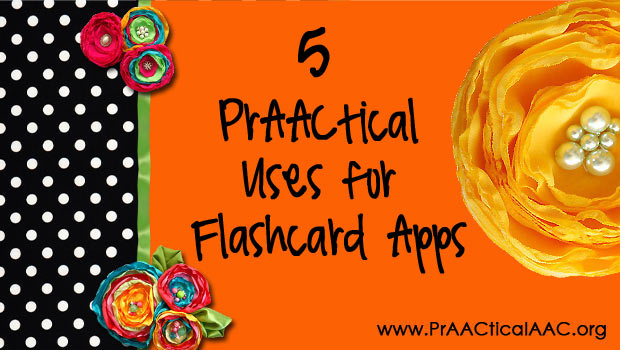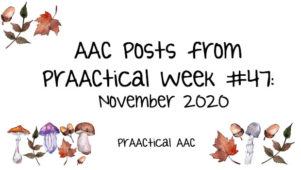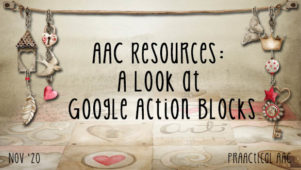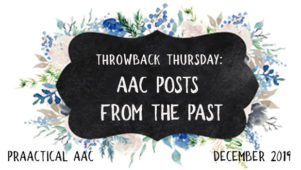5 PrAACtical Uses for Flashcard Apps


We love AAC intervention that begins and ends with a context that is meaningful to the learner. Not only is contextually relevant therapy more engaging and fun for the learner (thus, easier on the clinician!) but it promotes generalization to real-world contexts. So we’ve never been terribly fond of therapy that uses flash cards, or, more recently, the digital versions on iOS or Android devices. It’s a shame, really. There are a lot of those kinds of apps, and many of them have great graphics. That got us to starting thinking: What could we use them for that improves real communication and AAC learning?
PrAACtical Uses for Flashcard Apps
- Make a Mini Schedule: Lots of people with AAC needs use paper-based picture schedules that depict the activities they do throughout the day. A flashcard app could be used in conjunction with those to show the steps or parts of an activity that is either complex or one that the learner doesn’t particularly like to do. Insert a picture and text label for each step of the activity. If the app supports recorded messages, add a phrase or sentence telling what to do for that step.
- Be Bossy: Here’s an activity for learners who are reluctant to use their AAC device but relish the opportunity to control the environment. Put fun and bossy messages on the flashcards. Set up prestored messages on the SGD to direct others to do something (e.g., “Use a crazy voice,” “Do the happy dance!” “Give me a high five,” “Pretend you’re on ‘The Voice’”). Get ready to look a bit ridiculous. The idea here is to help the learner associate AAC use with fun and highlight the ways in which the device can be used to manipulate the environment in an entertaining way.
- Core Word Practice Activity: We’re always looking for ways to work in some additional practice on words like ‘do,’ ‘can,’ and ‘it.’ Flashcards with core words can be turned into a game with each person taking a turn to find it on the AAC device (for beginners) or use it in a sentence (for more experienced AAC users).
- Vocabulary Learning Activity: Teaching semantics is something best done (in our humble opinion) using repetition with variety. While we’d certainly start teaching a new word meaning with something more contextually relevant, there is plenty of room to use other kinds of activities to solidify and deepen work knowledge. One way to use flashcards is in a collaborative activity in which you and the learner work together to build a set of flashcards for a target vocabulary word. Once you’ve selected a word to work on, sit with the learner to talk about it (using aided language input, of course), and look for pictures on the internet that relate to that word. As you find relevant pictures, add them to the flashcard set.
- Narrative Development: Some of our AAC friends need a lot of help understanding story grammar. Telling, retelling, and deconstructing stories are important not just in conversation, but also literacy development and academic success. Creating flashcard sets to retell the key components of a familiar story or personal narrative can be a useful way for these students to conceptualize their sequential nature. We can flip through the flashcards (one for each element of the story) as we are talking about it with our natural speech and AAC strategies.
Need help finding flashcard apps?
- Comprehensive list of flashcard apps and details about each one
- Search the AppyMall
We have barely scratched the surface with prAACtical uses for flashcard apps. If you have a creative idea for what to do with these, please share so we can try it, too.
–
Filed under: PrAACtical Thinking
Tagged With: Apps, core language, flashcards, schedule, semantics, vocabulary
This post was written by Carole Zangari





2 Comments
How about high tech Jeopardy with an app that let’s you sort pictures by categories? “Alex, I’ll take dessert foods for 500” and then they have to find the word on their device to match one of the pictures in the dessert folder!
🙂
Love it, Jeanne!!